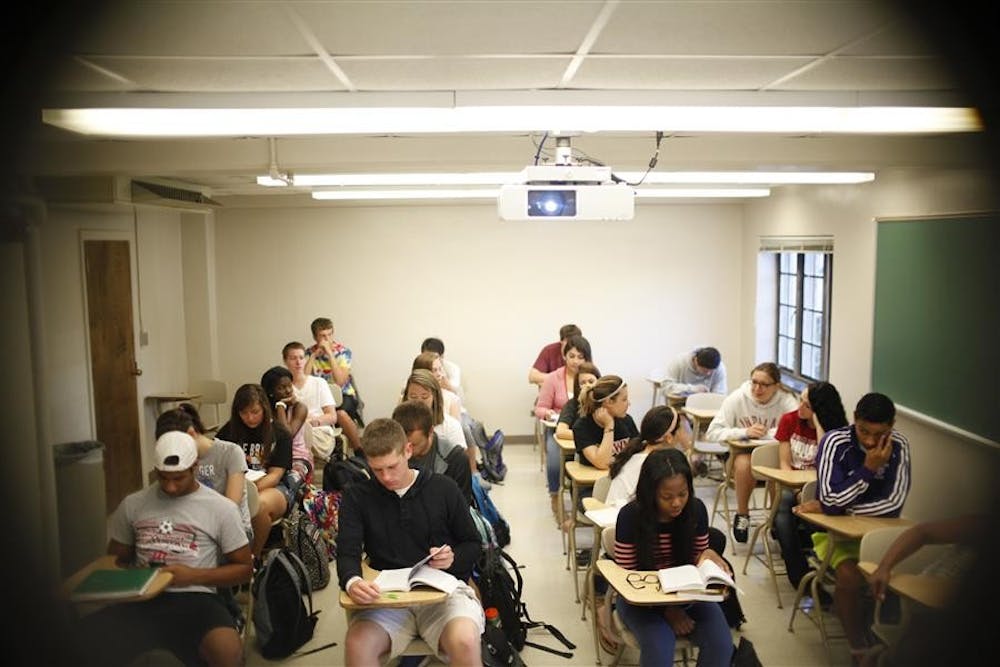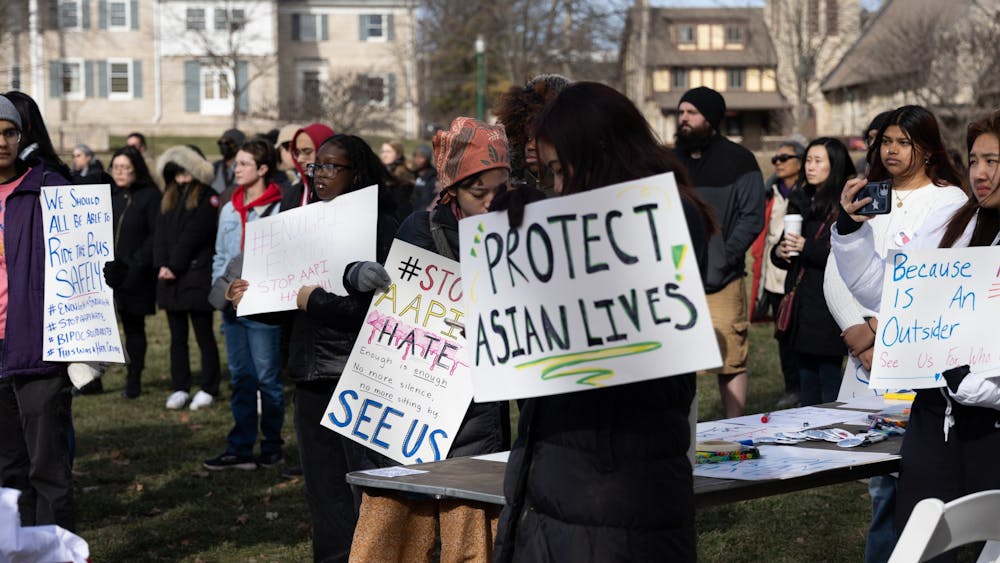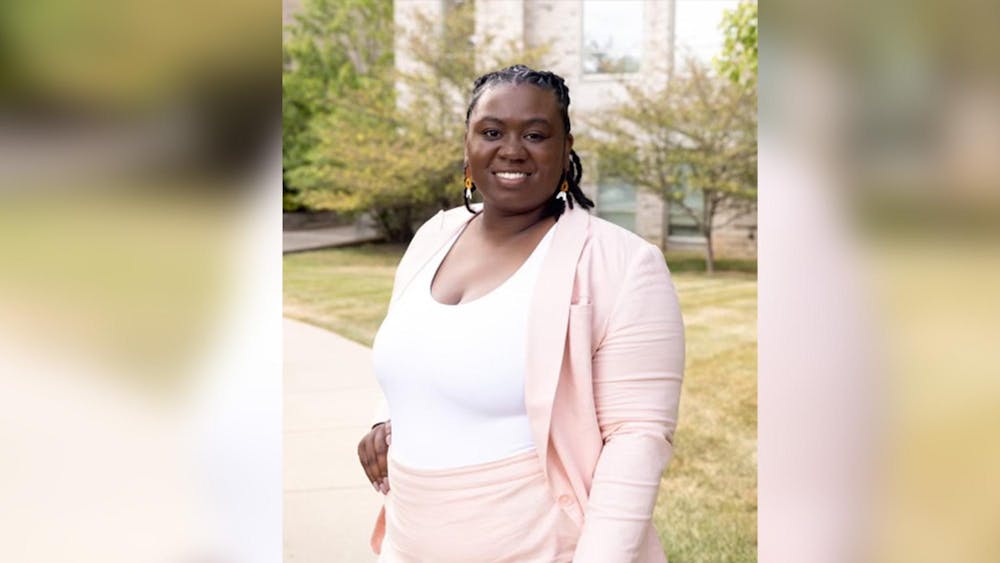The board endorsed a resolution to double campus enrollment of under-represented minorities by this school year.
The fall 2013 student body is the most diverse yet, but the numbers are short of the goal.
Under-represented minorities have increased from 7.6 percent in fall 2005 to 13.2 percent this fall, 2.2 percentage points short of the Trustees’ goal.
The plan was outlined by then-student Courtney Williams and Dr. Charlie Nelms, the vice president of Institutional Development and Student Affairs, and approved by former IU president Adam Herbert and President Michael McRobbie one year later.
Tom Reilly, a newly-elected trustee at the time, said he thinks the plan lacked analysis of trends in minority enrollment and an understanding of the difficulties in calculating race.
“As a result, I’m not sure that the percentage of under-represented minorities improved much at all in Bloomington,” Reilly said. “I’m not sure if there’s been that much progress at all from where we were then.”
* * *
Mayra Meza is one of the 7,604 students in this fall’s freshman class, the
second largest class in the history of IU.
She’s part of another growing population on campus — the Hispanic/Latino community.
IU Bloomington’s total Hispanic/Latino population has increased by 7.4 percent since last school year.
Meza, a resident of Hammond, Ind. — a city in between Chicago and Gary — came to IU as both a Groups and Hudson & Holland Scholar.
At her high school she was used to seeing diverse faces.
When she arrived at IU, she said she was culture-shocked.
“I don’t see many people of color,” Mayra said, “It’s very rare to see multiple, different races all going in the same direction. I’m not used to seeing so many white people around me, and it’s just different.”
The University set a record at IU Bloomington this fall with an 18.6 percent minority population. But there’s little improvement for known-domestic, degree-seeking, under-represented minorities — students who identify as Hispanic/Latino, African-American or American-Indian.
There is speculation that the growth in under-represented minorities is actually smaller than what’s written down on paper because of recent federal changes in racial and ethnic categories in all U.S. educational institutions, law professor Kevin Brown said.
In 2010, the federal government altered the application students fill out when enrolling. With the new application, any student who identifies as Hispanic or Latino, even if they also identify with other races, is automatically categorized as Hispanic or Latino.
These changes mean the under-represented minority population includes a large number of Hispanic or Latino students who would have been considered “white” or “other” prior to the new regulations.
Non-Hispanic students who select more than one race are automatically put into a “two or more races” category. Students who select White and Asian are classified as “two or more races,” and are considered under-represented minorities on campus, even though neither population is under-represented.
The 2010 revision makes it difficult to compare data from the time when the Board of Trustees approved their goal. It also means the current under-represented minority enrollment is even farther from the trustees’ goal.
A group of University administrators and faculty, including Brown; James Wimbush, the vice president for Diversity, Equity and Multicultural Affairs; and John Applegate, McRobbie’s special assistant and executive vice president for University Academic Affairs, met Monday to discuss the discrepancies in calculating degree-seeking, under-represented minorities.
Todd Schmitz, executive director of University Institutional Reporting and Research, also present, said IU should consider making under-represented minority enrollment information more transparent to the public. Schmitz hopes to sharpen the University’s comparisons to the Board’s 2005 resolution.
“Now we’re going to pursue how the data would look should we go in and have a different kind of trumping rule,” Schmitz said.
* * *
Wimbush has been seated in his new office in Bryan Hall for only a month.
The new Vice President of DEMA assumed the role after Edwin Marshall retired this summer.
Wimbush already has a strategy in place for minority recruitment and retention, he said.
His three-pronged approach focuses on maintaining a diverse faculty and staff of under-represented minorities, improving the climate and outreach of the culture centers on campus and boosting University minority outreach, he said.
“If we put the right infrastructure in place, I believe we can have consistent gains,” Wimbush said. “I think we can do that.”
An additional goal for Wimbush is to increase the number of under-represented minorities in graduate school by providing funding for an extra year and mentorship programs to help them finish strong, he said.
“We’re trying to change the complexion, so that when I walk across campus, I’ll see more people that look like me,” Wimbush said. “When students go into classrooms, it’s not a formidable conclusion that the person standing in front of them is going to be of one particular race.”
David Johnson, vice provost for Enrollment Management, said the University offers programs such as the Balfour Scholars Program and a new outreach campaign for 21st Century Scholars called Mindset for Success.
“We are particularly focused on increasing our enrollment from Indianapolis high schools and are working to strengthen our partnerships and relationships with those high schools,” Johnson said. “By targeting this scholar population, OEM can reach thousands of under-represented students and families.”
With a 4.3 GPA and an 1840 SAT score, Meza had several options for her college education. She said she chose IU over other schools because the University offered her the most affordable tuition and a strong School of Public and Environmental Affairs.
She’s also found a home within her Hispanic community, she said. She’s a part of the Latino Enhancement Cooperative, which puts on the Hispanic festival for Hispanic Heritage Month, and has helped her take an active role in fostering diversity on campus.
“Although we may not be as diverse as I like it to be, there’s still many opportunities for minorities to get ahead and be involved in the school,” Meza said, “There’s communities here within our big community, and we can still feel at home with our own people around us.”
Follow reporter Aaricka Washington on Twitter @aarickawash.
Trustees fall short of diversity-based goal

Get stories like this in your inbox
Subscribe





